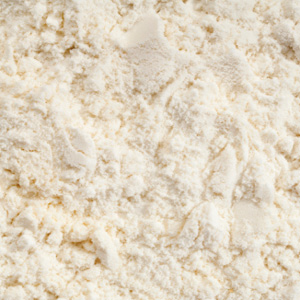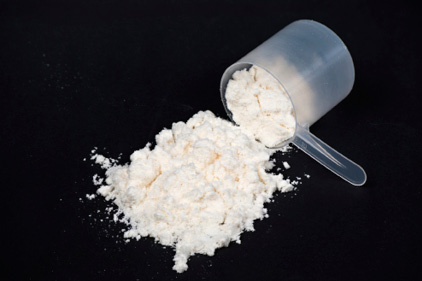
|
| Whey Proteins |
Well, of course, the ground beef contains other ingredients — call them whatever you like — it is seasoned and made to be delicious for use as a filling and topping in many of the offerings on the chain’s dynamic menu. This is exactly what Taco Bell said in response to the lawsuit.
In fact, I was very proud of the company’s comeback: full-page newspaper ads itemizing the company’s signature recipe. Knowing that this defense was an unexpected expense for the company, I increased the frequency of my visits and encouraged friends to do the same. Most people got it, especially anyone who has ever made tacos from scratch. The ground beef simply would not be appealing if “other” ingredients were not added.
Still, there’s that lingering question many Taco Bell aficionados have: what are extenders and fillers? Not legally defined, these terms typically refer to ingredients that bind water, often creating a gel, and by doing so, contribute to a juicier, lower-fat finished product. This is because the gel displaces some of the “real” meat in the finished product, replacing calorically dense fat (inherent to the meat) with low- or no-calorie moisture. How could this be bad?
Most luncheon meats do it, even those sporting “natural” labels. For example, Applegate Farms, Bridgewater, N.J., includes carrageenan, a hydrocolloid extracted from seaweed that binds water, in a number of its Applegate Natural luncheon meats.
Formed meats would not be possible without these ingredients. And without formed meats, many Americans would not be able to enjoy meat products on a regular basis. One example is Jennie-O Turkey and Gravy Roast. The turkey in this very economical frozen roast contains up to 27% of a solution of turkey broth, modified food starch, salt, sugar, sodium phosphate and flavoring.
Whey is an option
An ingredient that a growing number of meat, poultry and fish processors are turning to for assistance in making their products more affordable with improved quality through shelf life is whey. Whey proteins, those nutrients derived from cow’s milk that have been embraced by athletes for their contribution to muscle recovery and building, offer numerous benefits to all types of center-of-plate proteins. They can increase cook yield, reduce purge, improve mouthfeel and enhance slicing yields, offering quality improvements and cost efficiencies in regular-, reduced- and fat-free products.
It was not that long ago that whey was viewed as a byproduct of cheesemaking, often dumped on fields or sold as animal feed. Today, there are whey manufacturers who consider cheese to be the byproduct, as whey proteins are in high demand by all types of food and beverage manufacturers, including meat, poultry and fish processors.
In addition to their aforementioned functional characteristics, whey proteins contain readily digestible and bio-available essential amino acids, which provide a high nutritive value. All of these attributes make whey ingredients very attractive.
There are several different types of U.S. whey proteins that can be used in meat, poultry and seafood products, according to the U.S. Dairy Export Council, Arlington, Va. Among the most commonly used are: sweet whey; whey protein concentrates (WPC), which ranges from 34% to 80% protein; and whey protein isolates (WPI), which are 90% or more protein. When it comes to using whey ingredients in meat, poultry and fish product manufacturing, there is no one-size-fits-all. And, depending on the desired effect, whey ingredients can also be used in conjunction with other functional ingredients.
For example, whole-muscle products injected with a brine that contains salt, polyphosphates and whey proteins can enhance moistness and tenderness (induced by water uptake and retention) of the muscle upon cooking. In the case of restructured meat products, a brine solution containing WPC or WPI is usually injected, massaged or tumbled directly into the muscle. Application work shows that with a 50% extended ham, WPC 80 (80% protein) or WPI can be used to improve tumbling yield and cook yield, enhance slicing yield and texture and reduce purge over an eight-week period of refrigerated storage.
In coarse-ground meat products such as sausages, the gelation properties of WPC or WPI are responsible for entrapping the fat and water that would typically be released from the protein matrix when it shrinks during cooking. The whey proteins form a thermo-irreversible gel, keeping the fat and water where it belongs — inside the encased sausage.
Whey’s function and benefits are similar in comminuted products such as hot dogs, bologna and luncheon meat. In a full-fat hot dog formulation, WPC or WPI can be used to maximize the USDA-allowable 1% non-meat protein, thereby maximizing the amount of water that can be added to the formulation.
With seafood products such as surimi — a blended, texturized and formed fish product made to imitate lobster, crab or shrimp — WPC and WPI can be used to improve textural properties. The addition of whey protein to fish protein is able to boost the gel rigidity by absorbing water and strengthening the fish protein network. When a mixture of whey proteins and water is used to replace up to 5% of fish in a product formulation, nearly identical gelling properties are obtained as if whey was not used. The benefit is that whey proteins cost less than seafood proteins.
There are many very wholesome and natural “other” ingredients that can be used to make meat, poultry and fish affordable and delicious. If some lawyers want to call them extenders and fillers, let them.


Report Abusive Comment